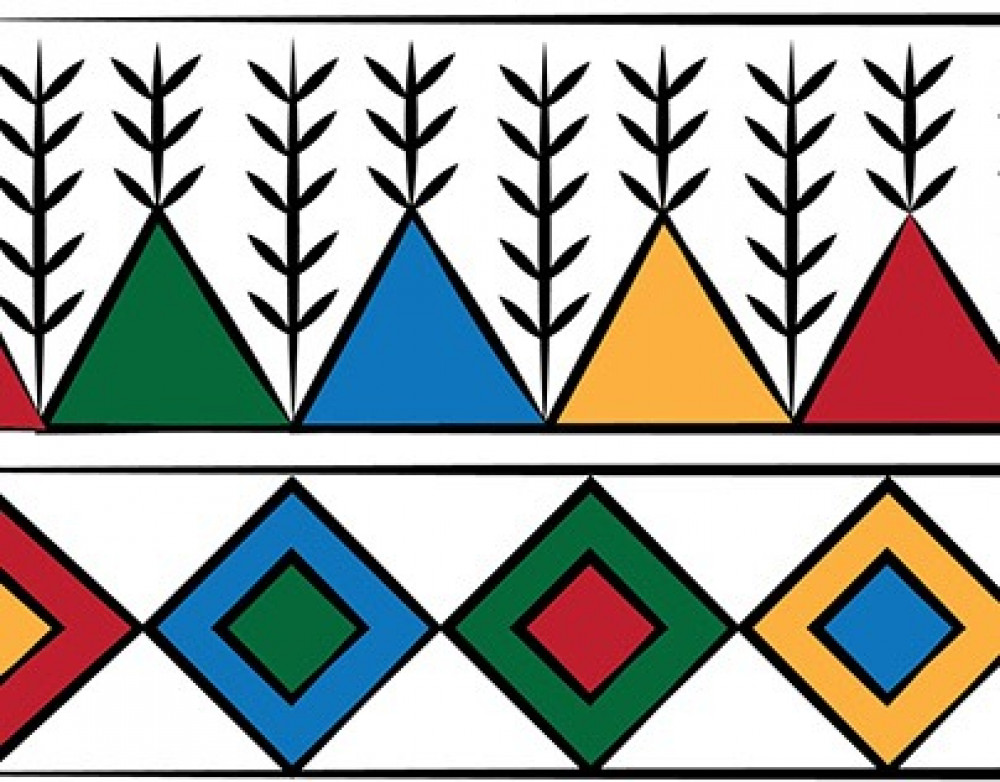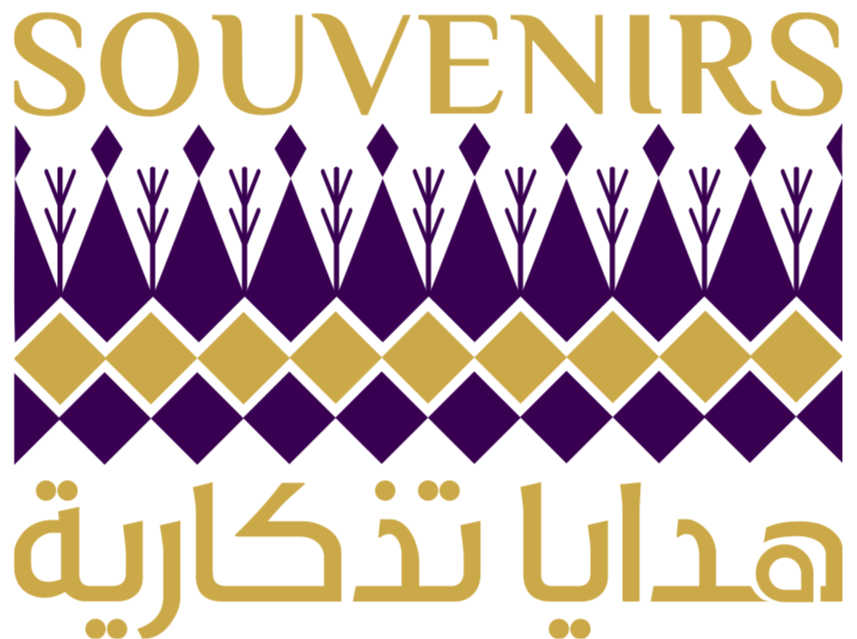
Al-Qatt Al-Asiri , or Al-Naqsh , or Al-Zayyan ,
It is one of the abstract arts that originated in the Asir region in Saudi Arabia and is performed by women to decorate their homes, where different geometric patterns and proportionate designs are chosen to accomplish layers on top of each other in which many lines and drawings are formed, each with its own term and then colored in a number of colors such as black, blue, red and yellow [1] ] It is an art included in the UNESCO Intangible Heritage List since December 9, 2017. [2]
The Asiri cat art is an ancient heritage art in the Asir region in southern Saudi Arabia . It is specialized in decorating homes from the inside and is performed by women. While the man assumes the responsibility of building and maintaining the house from the outside, the lady of the house takes over its decoration from the inside, as she draws harmonious shapes on the walls of the room with bright and attractive colors. This art was the reason for the gathering of women and help in drawing the motifs, and the housewife used to draw initial lines for the motifs and put colored dots representing the color of each part, so that her relatives and friends would come to help her draw and color the motifs and shapes.
Engraving forms
- Al-Bannah: This figure symbolizes the female, and it often comes on top of the cat, whether it is in the piece or the wall at the end or the corral.
- Feathers: They come in the form of plants among builders.
- Mihrabs: They symbolize the mihrab . In its form, it represents the religious aspect and its presence within the interests of the discussants. The mihrabs in the inscription come in a form resembling a succession of sea waves.
- Al-Rukun: They are large adjacent triangular shapes that differ in shape and may contain different shapes of inscription designs.
- Balsna: It comes in the moment and at the end, and is sweetened with what they call dots, which are specific molds in line with the extension of the moment. Balsana is represented by small circles and semicolons.
- Combs: They are parallel lines heading up or down at the end of the hair, similar in shape to the teeth of a comb.
- Torture: At the end of the builders, the head of the triangle ends with three points resembling corn cobs.
- Sankar Wali: It is a form of parallel adjoining mihrabs, but it often comes to the right.
- Triangles and fifths: They are three or five parallel lines, which come at the bottom of the inscription as an opening to it, and may come alone in staircases or backfills.
- Palm: are parallel lines of different colors at the bottom of the wall of the room and in the hallways of the stairs.
- Grid: It is an overlapping geometric lozenge or square that takes a uniform color, and it is rare that there are multiple colors in it.
Intangible cultural heritage [ edit ]
Al-Qatt Al-Asiri art was selected as an intangible cultural heritage at the twelfth meeting of the Intergovernmental Committee for the Safeguarding of Intangible Cultural Heritage on Jeju Island, South Korea , during the period from 4 to 9 December 2017, thus becoming the Al-Qatt Al-Asiri art as the sixth Saudi intangible cultural heritage included in the list World Heritage after Falconry (2012), Al Majlis (2015), Arabic Coffee (2015), Al Ardah Al Najdi (2015), and Al Mezmar (2016).
Source: Wikipedia
Sources
- ^ Al-Asiri inscription is an art that mimics time and addresses space
- Al-riyadh newspaper.
- Saved copy
- December 08, 2017 on the Wayback Machine .
- ^ ""UNESCO": From now on, "Al-Qatt Al-Asiri" is a distinguished world heritage
- . Previously electronic newspaper . Archived from
- the origin
- On 2019-12-12. Viewed on 2019-03-24.
- ^ The Saudi "Al-Qatt Al-Asiri" on UNESCO's list of cultural heritage
- BBC Arabic, December 7, 2017. Accessed this track on December 8, 2017
- Saved copy
- December 20, 2017 on the Wayback Machine .
- ^ Jump up to:
- AB " Asiri Cat"
- . Archived from
- the origin
- On 2019-01-20.
- ^ Jump up to:
- AB Al -Asiri inscription is an art that simulates time and addresses space
- Al-Riyadh newspaper, June 17, 2010. Accessed this track on December 25, 2017
- Saved copy
- December 08, 2017 on the Wayback Machine .
- ^ UNESCO: "Al-Qatt Al-Asiri" World Heritage
- Sky News Arabia, December 7, 2017. Accessed this track on December 8, 2017. "Archived copy"
- . Archived from
- the origin
- On 2017-12-07. View it on 10-17-2020.



